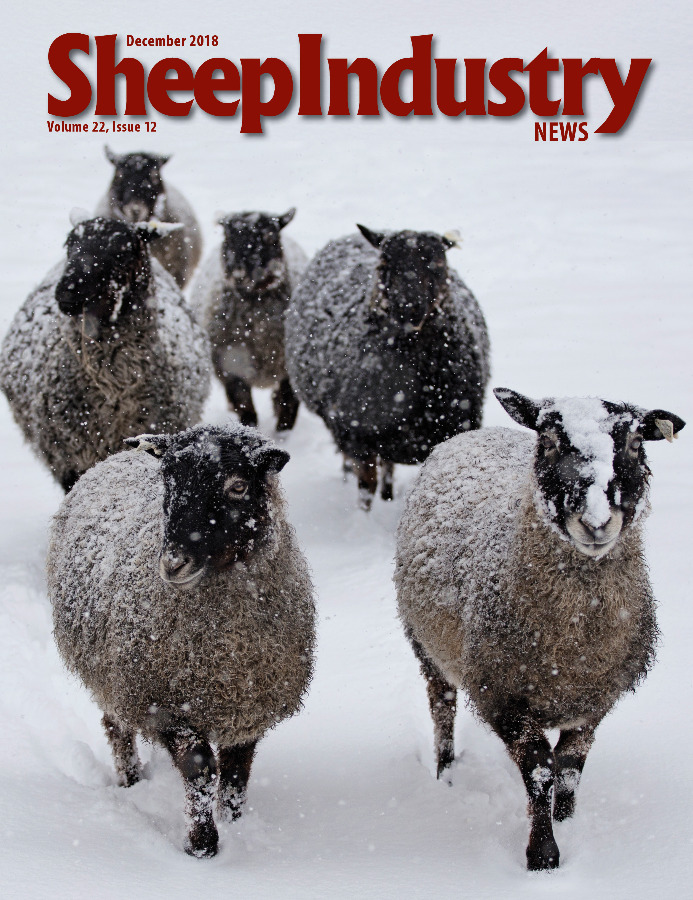
- December 2018
- President’s Notes
- Regulation of Fake Meat Creates Issues
- 2019 ASI Annual Convention
- American Wool Called to Duty in Army Uniforms
- Publication Sheds Light on Mycoplasma Ovipneumoniae
- Sheep Dairies Turn to Processing for Profits
- Culinary Experience Connects Chefs with American Lamb
- Obituary: Dr. Gerald Kennedy
- Market Report
- Jerry King Cartoon
- Around the States
- The Last Word
New Publication Sheds Light on Mycoplasma Ovipneumoniae
New research published in the Center for Disease Control and Prevention’s Emerging Infectious Diseases December 2018 newsletter is helping to shape the conversation between wildlife and livestock scientists on questions of pathogen transmission.
The research – published by Dr. Margaret Highland, affiliated with the Washington Animal Disease Diagnostic Laboratory in Pullman, Wash. and the U.S. Department of Agriculture – and others titled Mycoplasma Ovipneumoniae in Wildlife Species Beyond Subfamily Caprinae, outlines the findings of the U.S. Department of Agriculture Agricultural Research Service’s study of nasal swabs from wildlife species between July 2017 and January 2018. During the course of that time, USDA/ARS received and collected nasal swabs from a number of wildlife species.
Specifically, looking for the presence of Mycoplasma ovipneumoniae bacterium, thought to restricted to the subfamily Caprinae (generally sheep and goat species), the researchers identified the bacterium in healthy moose, caribou and mule deer and diseased mule and white-tailed deer. These findings are helpful in better understanding the complexities of pathogen transmissions as the study notes, “[a]lthough M. ovipneumoniae was identified in respiratory disease outbreaks in bighorn sheep as early as 1980, the past decade has brought it under scrutiny because of evidence supporting its association with bighorn sheep pneumonia in western North America. Because most reports have described this bacterium in sheep and goats, and fewer in muskoxen…, some have concluded that M. ovipneumoniae is specific to the subfamily Caprinae or has a host range limited to Caprinae, despite publications describing M. ovipneumoniae in non-Caprinae species, including Beira antelope… with respiratory disease in Qatar and in 9 cattle… in Colorado.”
One of the main issues being that the research to date has only looked for the bacterium where they expected to find the bacterium – in the sheep and goat subfamily.
As the study points out, “[i]n general, definitive claims of host range restrictions are absent from mycoplasma literature, because ‘assumptions about restricted host range of mycoplasmas, based on the host from which they were first or frequently isolated, are usually made in the context of nearly complete absence of representative sampling of the vast majority of potential vertebrate hosts’. In addition to insufficient sampling of potential hosts, the fastidious and variably culturable nature of M. ovipneumoniae often requires molecular techniques for identification.”
This publication marks a tremendous point in better understanding the distribution of Mycoplasma ovipneumoniae in wildlife. As the study concludes, “[t]hese findings are of importance to epidemiologic investigations because current dogma regarding host specificity may dissuade laboratories from pursuing identification of this fastidious bacterium in hosts beyond the subfamily Caprinae.”
It is the hope of ASI that this and further research will help foster a dialog between wildlife and domestic livestock advocates.
Read the full article at https://wwwnc.cdc.gov/eid/article/24/12/18-0632_article.

